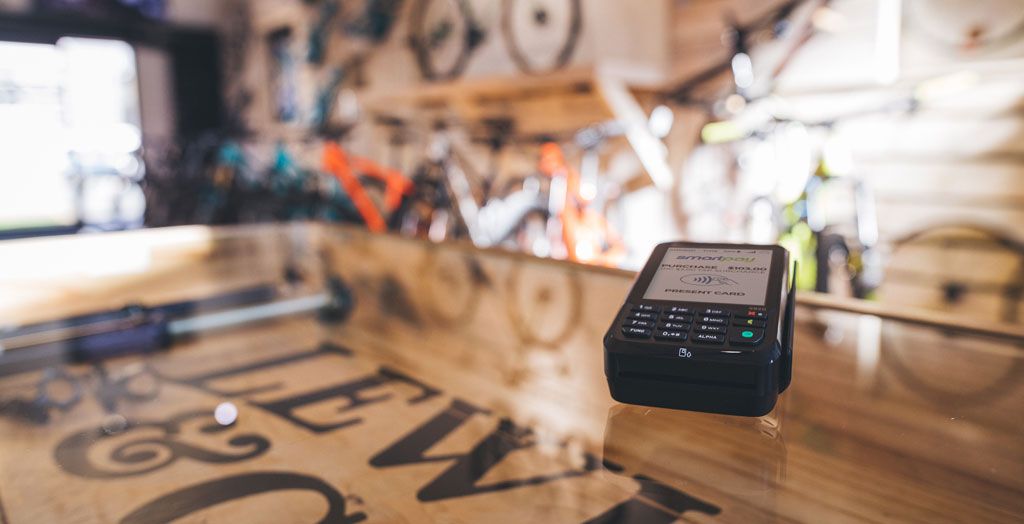
Leveraging contactless technology can be a balancing act for small businesses in New Zealand.
While it opens the door to new opportunities for sales and growth, it also comes with a cost because of Merchant Service Fees (MSF).
So what are merchant service fees for? How much do they cost? And why are more New Zealand businesses turning to adding a surcharge fee as a solution.
Contactless payment and merchant service fees
In New Zealand, when a customer inserts or swipes a debit card, the transaction is processed as an EFTPOS payment; which is paid for by your monthly payment network fee.
Other credit card and contactless payments including contactless debit card, Apple Pay, Google Pay and others, are processed by card schemes like Visa, MasterCard and American Express. These transactions incur a merchant service fee (MSF) per transaction; which is paid out as a monthly sum to your merchant bank.
This fee is what the acquirer (likely your business bank) charges your business (the merchant) to accept and process a credit card or contactless payment.
The MSF is used to pay all the different parties that work “behind the scenes” to exchange the information, confirm the payment and settle the funds on your behalf.
The largest component of MSF is the interchange fee (charged by card issuers), and this can vary greatly depending on the type of card used, the payment method and the type of business you’re in.
How much do contactless (and credit card) payments cost New Zealand businesses?
Banks charge retailers MSF for every transaction their customers make using a credit card or contactless payment.
The MSF is calculated as a percentage of the transaction value and is based on the package you choose with your bank.
MSF packages that banks offer can include blended rates, interchange plus rates or fixed rates and these vary depending on the nature of your business and volume of transactions.
As a broad estimate, the average surcharge fee rate for Smartpay customers is between 2% and 3%. In which case, if a customer makes a $30 purchase the merchant fee to accept the payment would be between $0.60-$0.90.
While this seems a small amount per transaction, these bank fees can quickly add up.
So why do merchants bother accepting contactless payments? In short, because that’s how customers expect to pay.
Payments New Zealand, June 2021.
The contactless conundrum for small business - should you introduce a surcharge fee?
While it costs to accept a contactless credit card or debit card payment, it also can cost not to accept it. Good customer service and bad customer service can both impact your bottom line dramatically.
Studies have shown that being open to new technology and offering flexibility in payments is good business practise that pays off in the long run.
Businesses that accept contactless payments experience greater growth. And that’s probably because contactless is now the preferred payment method for 1 in 3 Kiwis. It’s faster, more convenient and safer.
Businesses that don’t accept contactless risk seeing customers walk out the door because they are unable to pay without a mobile wallet option as they are not carrying a physical wallet or cash. More than half of millennials will even avoid shops that don’t accept contactless payments.
And this entire shift has only accelerated due to Covid-19.
Across the ditch, the contactless trend has gone mobile with 40% of contactless transactions taking place now being from a mobile wallet. One in five Australians don’t even carry a physical wallet anymore and with growing payment technologies in New Zealand, this trend will soon follow here.
This places retailers in between a rock and a hard place. Either watch customers walk out the door because they only have a digital wallet to pay, or accept these payments and associated costs.
Unsurprisingly, many New Zealand businesses don’t see either option as particularly desirable and have opted instead for a third way: introducing a payment surcharge fee.
Adding a surcharge fee offers a solution
More New Zealand businesses are starting to see surcharging as the way to go.
A surcharge fee is simply an additional charge you add to the total for your customer to pay. It is a percentage of the transaction value. It’s up to you to decide, but it must meet some important obligations.
Most importantly, your surcharge fee should only cover the cost of acceptance, and you must declare it to your customer before payment. We provide surcharge signage to our customers which can be downloaded here on our website.
When done right, surcharging is a fair and transparent way to allow customers to pay the way they want (and collect the rewards they want), without reducing margins or increasing prices for the merchant.
The bottom line is that surcharging allows you to offer the all important contactless and credit card options while eliminating your cost of acceptance.
For customers that do not wish to pay the surcharge fee, you will always have an option for customers to pay without incurring additional merchant fees like cash and cards (insert/swipe)
If you’re looking for ways to cut some of your business costs, a surcharge fee is definitely worth considering. As operational costs continue to rise, it can put your mind at ease knowing that you can offer more popular ways for customers to pay without having to absorb the additional fees.
The benefits are not just limited to cost savings. It makes you appear more flexible to different forms of payment, provides a better customer experience and your business remains on top of shifting consumer trends.
If you want to learn more about how contactless payments could help your business, talk to the Smartpay team today.